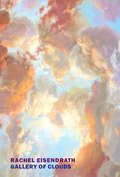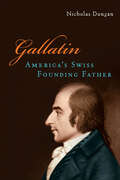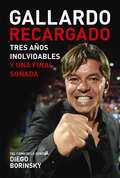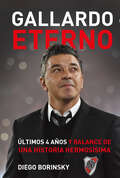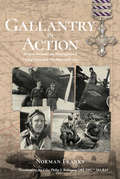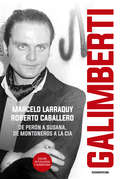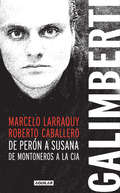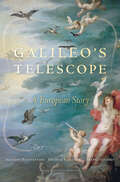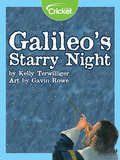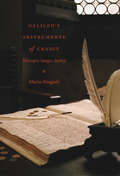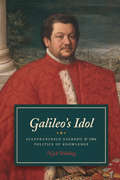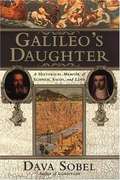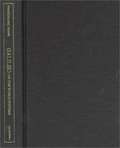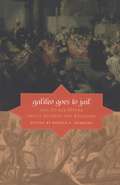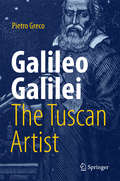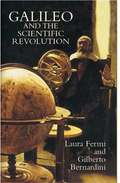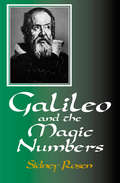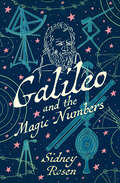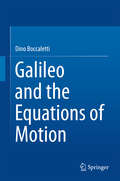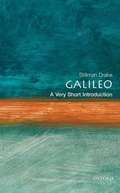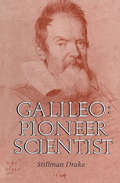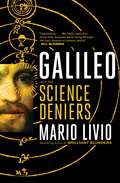- Table View
- List View
Gallery of Clouds
by Rachel EisendrathA personal and critical work that celebrates the pleasure of books and reading.Largely unknown to readers today, Sir Philip Sidney&’s sixteenth-century pastoral romance Arcadia was long considered one of the finest works of prose fiction in the English language. Shakespeare borrowed an episode from it for King Lear; Virginia Woolf saw it as &“some luminous globe&” wherein &“all the seeds of English fiction lie latent.&” In Gallery of Clouds, the Renaissance scholar Rachel Eisendrath has written an extraordinary homage to Arcadia in the form of a book-length essay divided into passing clouds: &“The clouds in my Arcadia, the one I found and the one I made, hold light and color. They take on the forms of other things: a cat, the sea, my grandmother, the gesture of a teacher I loved, a friend, a girlfriend, a ship at sail, my mother. These clouds stay still only as long as I look at them, and then they change.&”Gallery of Clouds opens in New York City with a dream, or a vision, of meeting Virginia Woolf in the afterlife. Eisendrath holds out her manuscript—an infinite moment passes—and Woolf takes it and begins to read. From here, in this act of magical reading, the book scrolls out in a series of reflective pieces linked through metaphors and ideas. Golden threadlines tie each part to the next: a rupture of time in a Pisanello painting; Montaigne&’s practice of revision in his essays; a segue through Vivian Gordon Harsh, the first African American head librarian in the Chicago public library system; a brief history of prose style; a meditation on the active versus the contemplative life; the story of Sarapion, a fifth-century monk; the persistence of the pastoral; image-making and thought; reading Willa Cather to her grandmother in her Chicago apartment; the deviations of Walter Benjamin&’s &“scholarly romance,&” The Arcades Project. Eisendrath&’s wondrously woven hybrid work extols the materiality of reading, its pleasures and delights, with wild leaps and abounding grace.
Gallaudet: Friend of the Deaf
by Etta DegeringOn a May day in 1814, while watching his younger brothers and sisters at play, Thomas noticed a small girl taking no part. She was Alice Cogswell, and deafness shut her out of the circle. The lack of language created a barrier between her and her friends. Thomas invented a game that helped Alice for the first time in her life to understand that things have names. Thomas knew what he could do. He knew he had to bring education for the deaf to America!
Gallatin: America’s Swiss Founding Father
by Nicholas DunganYou won’t find his portrait on our currency anymore and his signature isn’t penned on the Constitution, but former statesman Albert Gallatin (1761-1849) contributed immeasurably to the formation of America. Gallatin was the first president of the council of New York University and his name lives on at NYU’s Gallatin School of Individualized Study, so it is with pride that New York University Press and the Swiss Confederation publish this new biography of Gallatin.Gallatin’s story is the opposite of the classic American immigrant tale. Born in Geneva, the product of an old and noble family and highly educated in the European tradition, Gallatin made contributions to America throughout his career that far outweighed any benefit he procured for himself. He got his first taste of politics as a Pennsylvania state representative and went on to serve in the U.S. Senate and House of Representatives. Gallatin became the Secretary of Treasury in Jefferson’s administration and, despite being of the opposite political party to Alexander Hamilton, Gallatin fully respected his predecessor’s fiscal politics. Gallatin undertook a special diplomatic mission for President Madison, which ended the War of 1812 with the signing of the Treaty of Ghent and gave the United States its genuine independence. Gallatin continued in diplomacy as minister to France and to Great Britain, where he skillfully combined his American experience and European background. In the early 1830s, at the age of seventy, he retired from politics and commenced a new career in New York City as a banker, public figure, and intellectual. He helped establish New York University and the American Ethnological Society, became an expert in Native American ethnology and linguistics, and served as president of the New-York Historical Society. Gallatin died at age 88 and is buried in Trinity churchyard at Broadway and Wall Street.In our own day, as we look at reforming our financial system and seek to enhance America’s global image, it is well worth resurrecting Albert Gallatin’s timeless contributions to the United States, at home and abroad. Nicholas Dungan’s compelling biography reinserts this forgotten Founding Father into the historical canon and reveals the transatlantic dimensions of early American history.Co-published with the Swiss Confederation, Federal Department of Foreign Affairs.
Gallardo recargado: Tres años inolvidables y una final soñada
by Diego BorinskySegunda parte de Gallardo Monumental, que abarca desde el Mundial de Clubes en 2015 hasta la final más emocionante de la historia del fútbol argentino con la derrota de Boca en el Estadio Bernabéu tal como los vivieron el DT y el plantel de River Plate. Gallardo recargado es un repaso minucioso y emocionante de los últimos tres años de River, desde octubre de 2015 hasta diciembre de 2018. A través de horas y horas de charlas, más de quince encuentros y cientos de mensajes intercambiados con el autor durante este lapso, además de la mirada complementaria de jugadores, colaboradores e hinchas, el libro nos permite recorrer de la mano de este auténtico líder una época inigualable, descubriendo historias desconocidas, modos de plantear partidos y gestionar situaciones extremas. Gallardo recargado no es una actualización de Gallardo Monumental sino su continuidad: el segundo episodio de una saga que promete seguir sumando contenido premium en años venideros y que contiene, como no podía ser de otro modo, un desarrollo exhaustivo e íntimo de la memorable final en el Bernabéu.
Gallardo eterno: Últimos 4 años y balance de una historia hermosísima
by Diego BorinskyCon el rigor que caracteriza el trabajo periodístico de Diego Borinsky, acá está el libro que completa el relato iniciado con Gallardo Monumental y continuado con Gallardo Recargado acerca del ya legendario ciclo de Marcelo "El Muñeco" Gallardo al frente de River. Infinidad de entrevistas y un exhaustivo archivo reconstruyen los últimos cuatro años de una trilogía épica destinada a convertirse en ineludible material de referencia para el hincha riverplatense. «Ha sido una historia hermosísima». El 13 de octubre de 2022 Marcelo Gallardo anunció finalmente lo que todos los integrantes del mundo River se resistían a escuchar. Y lo hizo dejando grabada una frase que viajó a través de tatuajes, remeras y stickers. Después de ocho años y medio, el Muñeco le puso término al que fue el ciclo más importante en la historia del club, no sólo por los catorce títulos ganados, las cinco eliminaciones consecutivas a Boca y la ya legendaria final de Madrid, sino por un legado que va más allá de los éxitos deportivos. Tercer episodio de una saga iniciada con GALLARDO MONUMENTAL y continuada con GALLARDO RECARGADO, GALLARDO ETERNO recorre los últimos cuatro años de su gestión (2019-2022) y traza un balance completo, con viajes permanentes hacia el pasado que permiten descubrir vivencias inéditas del protagonista central de esta era única e irrepetible. Con capítulos repletos de sorpresas, las historias de los hinchas a los que el Muñeco marcó de un modo impactante, infinidad de testimonios y los conceptos que transformaron sus ruedas de prensa en verdaderas lecciones del fútbol y liderazgo, GALLARDO ETERNO cierra el círculo de una trilogía que no puede faltar en la biblioteca de todo riverplatense que se precie. Una conclusión a la medida de un viaje épico que nadie olvidará.
Gallantry in Action: Airmen Awarded the Distinguished Flying Cross and Two Bars 1918—1955
by Norman FranksA who&’s who of the British airmen honored for their valor and courage—from the RAF&’s inception to the post-WWII era—arranged alphabetically. When the Royal Flying Corps and the Royal Naval Air Service merged on 1 April 1918, to form the Royal Air Force, the new command needed to have its own gallantry medals to distinguish itself from the Army and the Royal Navy. Thus the new Distinguished Flying Cross came into being. By the end of WWI, only three Second Bars had been promulgated for First War actions. Before WWII erupted, four more Second Bars had been awarded, and fifty were added to this total by the conflict&’s end. Three more were awarded post-WWII, between 1952–1955, making a grand total of sixty. Still a significantly small number of members of this pretty exclusive &“club.&” Within the covers of this book recorded for the first time together are the mini-biographies of all those sixty along with the citations that accompanied their awards, or in some cases the recommendations for them. Also recorded are citations for other decorations such as the Distinguished Service Order, et al. As the reader will discover, the range of airmen who received the DFC and Two Bars, cover most of the ambit of WWII operations, be they fighter pilots, bomber pilots, night-fighter aircrew, aircrew navigators, engineers, etc., or reconnaissance pilots. Each has interesting stories, proving, if proof be needed, their gallantry in action.
Galimberti (Edición actualizada y aumentada): De Perón a Susana, de Montoneros a la CIA
by Marcelo Larraquy Roberto CaballeroBiografía única de un aventurero y personaje crucial del peronismo que representó como pocos el arco que llevó a varios del compromiso militante juvenil al pragmatismo neoliberal de los noventa. Galimberti es más que un libro. Es el retrato de un personaje inverosímil, que supo condensar en una vida todas las paradojas de dos épocas aparentemente irreconciliables: el ideal socialista de los 70 con el neoliberalismo de los 90. Es, asimismo, la oportunidad para reconstruir el relato de las cuatro décadas más intensas que vivió la Argentina del siglo XX, pero esta vez sin medias tintas, prejuicios, silencios, ni insinuaciones. Hombre de acción, carismático y paranoico. Adorado y reprobado por sus compañeros, sus enemigos temían y admiraban su arrojo. Entre el heroísmo y la infamia, el Loco, como lo llamaban con fascinación, fue uno de los conductores más audaces y temerarios de aquellos años. Su vida extrema y absolutamente singular, con sus contradicciones, sus virtudes y sus miserias, es una herramienta única para comprender el tránsito entre las ilusiones revolucionarias y el pragmatismo capitalista. Más que perseguir certezas, Larraquy y Caballero perforaron muros y desmontaron dogmas con el objetivo elemental de entender a un país a partir del ser humano, y escribieron esta monumental biografía, que es ya un clásico de la investigación periodística de todos los tiempos.
Galimberti: De Perón a Susana, de Montoneros a la CIA
by Marcelo LarraquyUna historia sobre la que se dijo y se escribió mucho, tal vez demasiado, pero que todavía sigue abierta. Galimberti es más que un libro. Es el retrato de un personaje inverosímil, que supo como pocos condensar en una vida todas las parad ojas de dos épocas aparentemente irreconciliables. Es, asimismo, la oportunidad para reconstruir el relato de las cuatro décadas más intensas que vivió la Argentina del siglo XX, pero esta vez sin medias tintas, prejuicios, silencios ni insinuaciones. Más que perseguir certezas, Larraquy y Caballero investigaron, hablaron, preguntaron, perforaron muros y desmontaron dogmas con el objetivo elemental de entender. Porque la inefable humanidad de Rodolfo Galimberti, con sus contradicciones, sus virtudes y sus miserias, es una herramienta singular para comprender el tránsito destemplado que recorrieron el país y el peronismo entre las ilusiones revolucionarias setentistas y el pragmatismo neoliberal de los noventa. «Sin más intenciones que la de escribir nuestro primer libro, engendramos un clásico de la investigación periodística, quizás el pri mero del siglo XXI, que tomó por sorpresa a muchos, incluidos nosotros mismos.»Marcelo Larraquy, Roberto Caballero
Galileo's Telescope: A European Story
by Massimo BucciantiniBetween 1608 and 1610 the canopy of the night sky changed forever, ripped open by an object created almost by accident: a cylinder with lenses at both ends. Galileo's Telescope tells the story of how an ingenious optical device evolved from a toy-like curiosity into a precision scientific instrument, all in a few years. In transcending the limits of human vision, the telescope transformed humanity's view of itself and knowledge of the cosmos. Galileo plays a leading-but by no means solo-part in this riveting tale. He shares the stage with mathematicians, astronomers, and theologians from Paolo Sarpi to Johannes Kepler and Cardinal Bellarmine, sovereigns such as Rudolph II and James I, as well as craftsmen, courtiers, poets, and painters. Starting in the Netherlands, where a spectacle-maker created a spyglass with the modest magnifying power of three, the telescope spread like technological wildfire to Venice, Rome, Prague, Paris, London, and ultimately India and China. Galileo's celestial discoveries-hundreds of stars previously invisible to the naked eye, lunar mountains, and moons orbiting Jupiter-were announced to the world in his revolutionary treatise Sidereus Nuncius. Combining science, politics, religion, and the arts, Galileo's Telescope rewrites the early history of a world-shattering innovation whose visual power ultimately came to embody meanings far beyond the science of the stars.
Galileo's Starry Night
by Kelly TerwilligerGalileo used his telescope to discover new and marvelous mysteries in the night sky!
Galileo's Reading
by Crystal HallGalileo (1564–1642) incorporated throughout his work the language of battle, the rhetoric of the epic, and the structure of romance as a means to elicit emotional responses from his readers against his opponents. By turning to the literary as a field for creating knowledge, Galileo delineated a textual space for establishing and validating the identity of the new, idealized philosopher. Galileo's Reading places Galileo in the complete intellectual and academic world in which he operated, bringing together, for example, debates over the nature of floating bodies and Ludovico Ariosto's Orlando furioso, disputes on comets and the literary criticism of Don Quixote, mathematical demonstrations of material strength and Dante's voyage through the afterlife, and the parallels of his feisty note-taking practices with popular comedy of the period.
Galileo's Instruments of Credit: Telescopes, Images, Secrecy
by Mario BiagioliIn six short years, Galileo Galilei went from being a somewhat obscure mathematics professor running a student boarding house in Padua to a star in the court of Florence to the recipient of dangerous attention from the Inquisition for his support of Copernicanism. In that brief period, Galileo made a series of astronomical discoveries that reshaped the debate over the physical nature of the heavens: he deeply modified the practices and status of astronomy with the introduction of the telescope and pictorial evidence, proposed a radical reconfiguration of the relationship between theology and astronomy, and transformed himself from university mathematician into court philosopher. Galileo's Instruments of Creditproposes radical new interpretations of several key episodes of Galileo's career, including his early telescopic discoveries of 1610, the dispute over sunspots, and the conflict with the Holy Office over the relationship between Copernicanism and Scripture. Galileo's tactics during this time shifted as rapidly as his circumstances, argues Mario Biagioli, and the pace of these changes forced him to respond swiftly to the opportunities and risks posed by unforeseen inventions, further discoveries, and the interventions of his opponents. Focusing on the aspects of Galileo's scientific life that extend beyond the framework of court culture and patronage, Biagioli offers a revisionist account of the different systems of exchanges, communication, and credibility at work in various phases of Galileo's career. Galileo's Instruments of Creditwill find grateful readers among scholars of science studies, historical epistemology, visual studies, Galilean science, and late Renaissance astronomy.
Galileo's Idol: Gianfrancesco Sagredo and the Politics of Knowledge
by Nick WildingOffers a vivid depiction of Galileo's friend, student, and patron, Gianfrancesco Sagredo (1571-1620). The author uses as wide a variety of sources as possible - paintings, ornamental woodcuts, epistolary hoaxes, intercepted letters, murder case files, and others - to challenge the picture of early modern science as pious, serious, and ecumenical.
Galileo's Daughter: A Historical Memoir of Science, Faith and Love
by Dava SobelThe author of Longitude presents a biography of the man Einstein called the father of modern physics, and the Church long branded a heretic, as revealed through the newly translated letters of his confidante daughter. Includes b&w illustrations of featured personalities, locales, and scientific paraphernalia, and a chronology demonstrating Galileo's legacy through the present.
Galileo on the World Systems: A New Abridged Translation and Guide
by Maurice A. FinocchiaroGalileo's 1632 book, Dialogue on the Two Chief World Systems, Ptolemaic and Copernican, comes alive for twentieth-century readers thanks to Maurice Finocchiaro's brilliant new translation and presentation. Galileo on the World Systems is a remarkably nuanced interpretation of a classic work and will give readers the tools to understand and evaluate for themselves one of the most influential scientific books in Western civilization.
Galileo goes to Jail and other Myths about Science and Religion
by Ronald L. NumbersA new generation of historians both of science and of the church began to examine episodes in the history of science and religion through the values and knowledge of the actors themselves. Now Ronald Numbers has recruited the leading scholars in this new history of science to puncture the myths, from Galileo's incarceration to Darwin's deathbed conversion to Einstein's belief in a personal God who didn't play dice with the universe.
Galileo Galilei, The Tuscan Artist
by Pietro GrecoProvides a very original biography of the pioneer of modern science.<P> Covers all aspects: the scientific, the artistic, the philosophical, and the theological.<P> Describes the cultural atmosphere in which modern science was born Details the causes of the difficult relationships between modern science and the Catholic Church.<P> This book is a distinctively original biography of Galileo Galilei, probably the last eclectic genius of the Italian Renaissance, who was not only one of the greatest scientists ever, but also a philosopher, a theologian, and a man of great literary, musical, and artistic talent – “The Tuscan Artist”, as the poet John Milton referred to him. Galileo was exceptional in simultaneously excelling in the Arts, Science, Philosophy, and Theology. These diverse aspects of his life were closely intertwined; indeed, it may be said that he personally demonstrated that human culture is not divisible, but rather one, with a thousand shades. Galileo also represented the bridge between two historical epochs. As the philosopher Tommaso Campanella, a contemporary of Galileo, recognized at the time, Galileo was responsible for ushering in a new age, the Modern Age. This book, which is exceptional in the completeness of its coverage, explores all aspects of the life of Galileo, as a Tuscan artist and giant of the Renaissance, in a stimulating and reader-friendly way.
Galileo and the Scientific Revolution
by Laura Fermi Gilberto BernardiniAn absorbing account of the origins of modern science as well as a biography of the revolutionary thinker, this inspiring book was co-written by a former director of the Italian Institute for Nuclear Physics and a historian of science (who was also the wife of physicist Enrico Fermi). It begins in Galileo's youth, with his return to his native city of Pisa to train as a physician. Instead, the student became captivated by the power of mathematical reasoning — an interest that led him to apply mathematical logic to natural events and, ultimately, to invent the concept of experimentation. Galileo's progress from student to teacher to scientific innovator is traced, with particular emphasis on his experiments with building and refining telescopes and his unprecedented observations of the moon and planets. The dramatic results of his findings, including his refutation of Aristotelian theory and his support of Copernican doctrine, are related in full, along with his clash with the papal inquisition and his tragic demise under house arrest. Written with a warm appreciation for the wonders of Galileo's achievements and with impeccable scholarship, this book concludes with a survey of the scientist's remarkable legacy. 12 figures. Appendix. Bibliography. Index.
Galileo and the Magic Numbers
by Sidney RosenSixteenth century Italy produced a genius who marked the world with his studies and hypotheses about mathematical, physical and astronomical truths. His father, musician Vincenzio Galilei said, &“Truth is not found behind a man&’s reputation. Truth appears only when the answers to questions are searched out by a free mind. This is not the easy path in life but it is the most rewarding.&” Galileo challenged divine law and the physics of Aristotle, and questioned everything in search of truths. And it was through this quest for truth that he was able to establish a structure for modern science.
Galileo and the Magic Numbers
by Sidney RosenThis &“enjoyable&” biography of the brilliant astronomer will intrigue young people who are &“bored with the textbook approach to science&” (The New York Times Book Review). Sixteenth century Italy produced Galileo, a genius who marked the world with his studies and hypotheses about mathematical, physical, and astronomical truths. His father, musician Vincenzio Galilei said, &“Truth is not found behind a man&’s reputation. Truth appears only when the answers to questions are searched out by a free mind. This is not the easy path in life but it is the most rewarding.&” Galileo challenged divine law and the physics of Aristotle, and questioned everything in search of truths. And it was through this quest for truth that he was able to establish a structure for modern science.
Galileo and the Equations of Motion
by Dino BoccalettiThis book is intended as a historical and critical study on the origin of the equations of motion as established in Newton's Principia. The central question that it aims to answer is whether it is indeed correct to ascribe to Galileo the inertia principle and the law of falling bodies. In order to accomplish this task, the study begins by considering theories on the motion of bodies from classical antiquity, and especially those of Aristotle. The theories developed during the Middle Ages and the Renaissance are then reviewed, with careful analysis of the contributions of, for example, the Merton and Parisian Schools and Galileo's immediate predecessors, Tartaglia and Benedetti. Finally, Galileo's work is examined in detail, starting from the early writings. Excerpts from individual works are presented, to allow the texts to speak for themselves, and then commented upon. The book provides historical evidence both for Galileo's dependence on his forerunners and for the major breakthroughs that he achieved. It will satisfy the curiosity of all who wish to know when and why certain laws have been credited to Galileo.
Galileo: A Very Short Introduction
by Stillman DrakeIn a startling reinterpretation of Galileo's trial, Stillman Drake advances the hypothesis that Galileo's prosecution and condemnation by the Inquisition was caused not by his defiance of the Church but by the hostility of contemporary philosophers. Galileo's own beautifully lucid arguments are used in this volume to show how his scientific method was utterly divorced from the Aristotelian approach to physics; it was based on a search not for causes but for laws. Galileo's methods had an overwhelming significance for the development of modern physics, and they led to a final parting of the ways between science and philosophy. Now, in this extraordinary and concise introduction, Drake provides a stimulating view of Galileo's life and works, providing a fresh perspective on Galileo's methodology and his final incrimination.
Galileo: Pioneer Scientist
by Stillman DrakeSince publication of Stillman Drake?s landmark volume, Galileo at Work: His Scientific Biography, new and exciting information has come to light about this towering figure in the history of Western science. Drawing largely from Galileo?s manuscript working papers, Drake now adds a wealth of detail to the story. Among the findings he presents in this volume are the steps that led to discovery of the pendulum law and the law of fall, by which Galileo opened the road to modern physics; Galileo?s path to the new astronomy of Copernicus, closely linked to his first essays in physics; his subsequent misgivings and final reassurances provided by the telescope. Drake focuses on Galileo?s pioneering work in physics, previously unknown, and shows that time has not diminished its value. He also considers some of the factors that played a part in the development of physics, its classical Greek beginnings, the medieval interlude, the contribution of some of Galileo?s contemporaries, and the resistance of others to his new science of motion. We see in a new light the relation of that science to modern dynamics, created by Newton half a century later. Galileo is better known as an astronomer than as a modern physicist. Drake sheds new light here too as he explores Galileo?s pioneer invention of satellite astronomy, his sighting of Neptune two and one-half centuries before that planet was identified, and his proposal of a cosmogony based on speeds of freely falling bodies. With this book Drake confirms Galileo as the first recognizably modern scientist, in both his methods and results.
Galileo: And the Science Deniers
by Mario LivioA fresh interpretation of the life of Galileo Galilei, one of history&’s greatest and most fascinating scientists, that sheds new light on his discoveries and how he was challenged by science deniers. &“We really need this story now, because we&’re living through the next chapter of science denial&” (Bill McKibben).Galileo&’s story may be more relevant today than ever before. At present, we face enormous crises—such as the minimization of the dangers of climate change—because the science behind these threats is erroneously questioned or ignored. Galileo encountered this problem 400 years ago. His discoveries, based on careful observations and ingenious experiments, contradicted conventional wisdom and the teachings of the church at the time. Consequently, in a blatant assault on freedom of thought, his books were forbidden by church authorities. Astrophysicist and bestselling author Mario Livio draws on his own scientific expertise to provide captivating insights into how Galileo reached his bold new conclusions about the cosmos and the laws of nature. A freethinker who followed the evidence wherever it led him, Galileo was one of the most significant figures behind the scientific revolution. He believed that every educated person should know science as well as literature, and insisted on reaching the widest audience possible, publishing his books in Italian rather than Latin. Galileo was put on trial with his life in the balance for refusing to renounce his scientific convictions. He remains a hero and inspiration to scientists and all of those who respect science—which, as Livio reminds us in this gripping book, remains threatened even today.
